1. Automated Hive Health Monitoring
AI-driven sensors continuously track internal hive conditions (temperature, humidity, CO₂, sound, vibration, weight) and flag anomalies. This enables early detection of stress or health issues without invasive inspections.

Modern “smart hives” embed IoT sensors to log real-time data on hive climate and activity. For example, a 2023 project outfitted 28 hives in North Carolina with temperature, humidity, audio, video, and weight sensors, streaming data to an online dashboard. These systems alert beekeepers if metrics stray from optimal ranges – a sudden temperature drop could signal brood-chilling, while a CO2 spike might indicate poor ventilation. Crucially, remote monitoring avoids frequent manual hive opening, which can disturb bees. Researchers note that manual inspections themselves can disrupt colony equilibrium and induce stress, potentially harming productivity. By contrast, continuous AI analysis of sensor data can catch subtle trends or sudden changes. One AI model even uses internal sensor readings plus weather info to estimate hive weight changes (a key health indicator) with ~20 gram error. Overall, AI-enabled hive monitoring provides early warning of problems (like overheating, queen failure, or nutrition shortages) so beekeepers can intervene before colony health declines. This proactive, data-driven approach has been shown to reduce disease outbreaks and winter losses by allowing immediate, targeted management rather than reactive measures.
2. Varroa Mite Detection and Counting
AI-powered computer vision identifies and counts Varroa destructor mites on bees or hive debris with extreme accuracy. Automated mite monitoring allows timely, targeted treatments while reducing human error in pest detection.
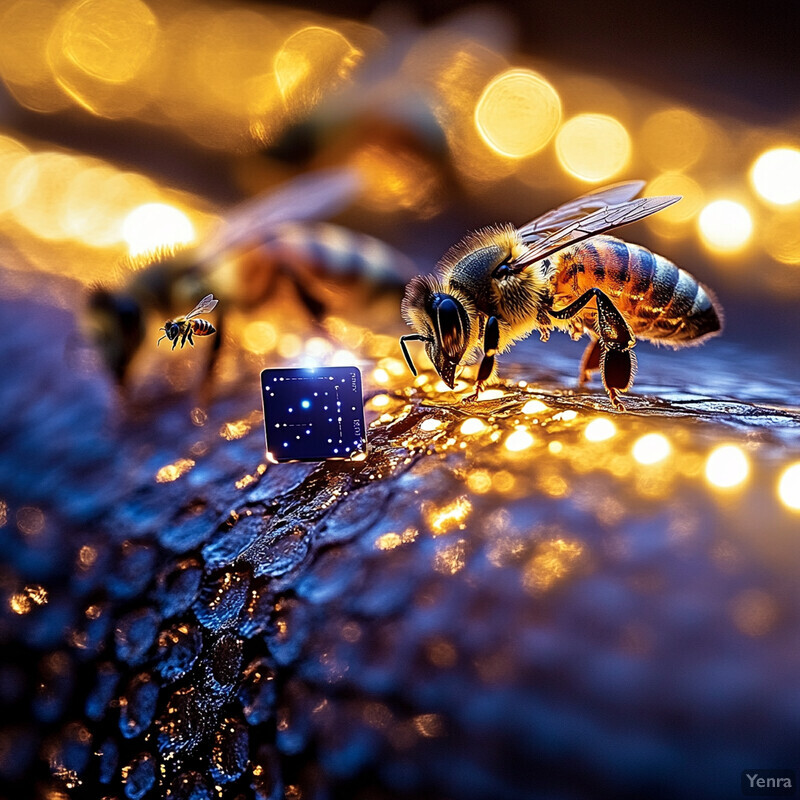
Varroa mites are deadly parasites linked to virus transmission and colony collapse, so precise monitoring is vital. AI vision systems now outperform the human eye in spotting these tiny brown mites. A recent innovation is a portable scanner (BeeVS) that photographs hive “sticky boards” (debris sheets catching falling mites) and uses neural networks to count mites. In tests over 17 weeks on multiple hives, the AI scanner’s counts were 99%+ repeatable (R² ≥ 0.998) and within 1% of the true mite numbers for samples with ≥10 mites – compared to ~20% error in human visual counts. Another approach uses hyperspectral imaging and machine learning to detect Varroa directly on bees. A 2024 study achieved >99% segmentation accuracy and 99.8% precision in distinguishing mites from bee parts, with automated counts closely matching manual tallies. Such AI systems alert beekeepers the moment mite levels exceed safe thresholds, enabling more targeted interventions. Indeed, by automating mite detection, beekeepers can replace calendar-based or blanket chemical treatments with precise treatments only when and where needed. This reduces pesticide use and colony stress, resulting in healthier bees and more sustainable apiculture practices.
3. Real-Time Disease Diagnosis
AI algorithms analyze visual and behavioral cues to detect bee diseases (e.g. American foulbrood, Nosema) at an early stage. By recognizing subtle signs in brood or adult bees that humans might miss, AI enables faster containment of outbreaks.

Honey bee diseases often start with mild, hard-to-spot symptoms inside the hive. AI is proving invaluable in diagnosing these in real time. For example, researchers in Arizona are training a smartphone app to identify brood diseases from photos of larvae. Diseases like American foulbrood (AFB) or European foulbrood cause discolored or sunken larvae – changes that AI vision can learn from thousands of labeled images. A postdoctoral team led by Dr. Duan Copeland has built an image dataset of healthy vs. infected brood, cross-verified by microbiome sequencing. Their goal is an app that non-experts can use to diagnose infections with expert-level accuracy. Early results are promising: the AI can distinguish among multiple larval pathogens (bacterial, viral, fungal) based on subtle visual cues that even master beekeepers find challenging. In parallel, other research is focusing on disease biomarkers. For instance, volatile organic compounds emitted from AFB-infected hives have been identified as unique “smells,” suggesting future AI nose sensors for non-invasive disease detection. By catching diseases in the incubation phase, AI diagnosis tools let beekeepers isolate or treat the affected colony before an outbreak spreads. This is critical – AFB, for example, is so contagious that regulators mandate burning of infected hives if not caught early. Through swift, AI-assisted diagnosis, colony losses and costly measures can be dramatically reduced, ushering in a new era of preventative bee healthcare.
4. Foraging Behavior Analysis
Advanced tracking technologies (RFID tags, GPS micro-sensors, computer vision) allow AI to map where, when, and how far bees forage. These insights help optimize hive placement and habitat plantings to ensure bees have ample, high-quality food sources.
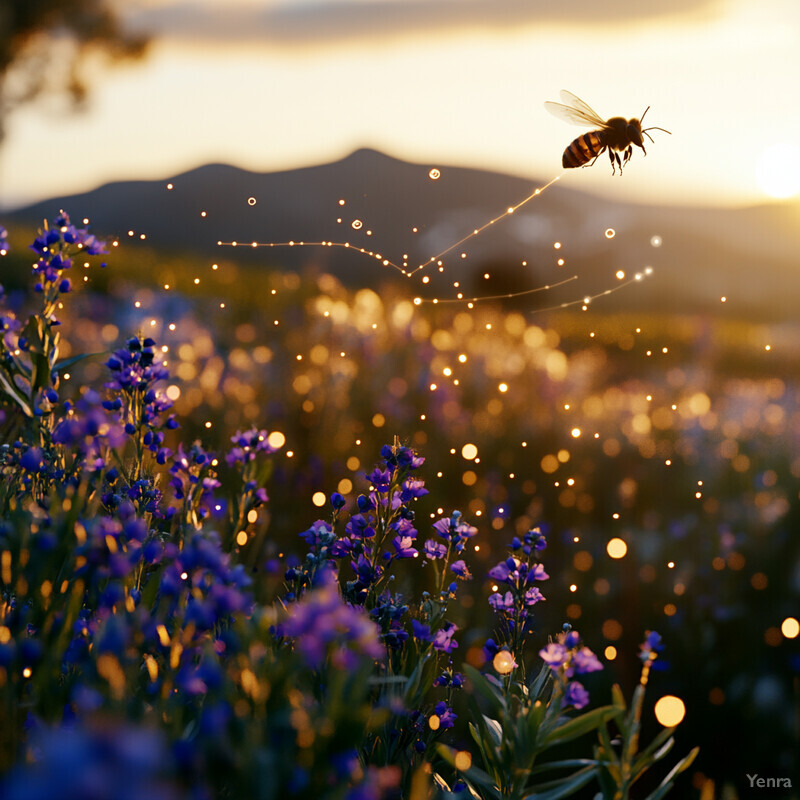
Understanding honey bees’ foraging patterns has long been difficult, but AI and telemetry are providing a clear picture. Researchers can now attach tiny RFID chips or harmonic radar tags to bees to log their flight paths and durations. Machine learning then turns millions of data points into usable insights. In one study, scientists used video and ML to decode waggle dances – the bees’ in-hive signals about food locations. Over 100,000 dance “waggle phases” were detected and decoded by algorithms, revealing not only where bees were finding nectar but also how dance patterns shift with resource distance. This AI analysis uncovered a feedback loop: as foragers dance, they subtly drift on the comb, causing followers to find similar nearby sites. Such fine-scale behavioral insight was unattainable without AI. On a larger scale, GPS tracking of foragers has shown how far bees roam in different landscapes (often 2–5 km radius, but up to 10+ km if resources are sparse). By overlaying these maps with floral resource data, AI can highlight forage-rich zones versus “food deserts” for bees. Beekeepers and farmers then use this information to strategically position hives and add bee-friendly plantings. In practice, data-driven foraging analysis has led to improved yields – for instance, moving hives nearer to identified wildflower patches increased colony pollen intake and subsequent honey production. Overall, AI offers a bee’s-eye view of the landscape, enabling evidence-based decisions that strengthen colonies and enhance pollination services.
5. Colony Collapse Prediction
AI predictive analytics combine diverse data (hive sensor trends, weather, pests, forage, etc.) to forecast the risk of Colony Collapse Disorder or major colony failures. Early warning of collapse likelihood allows intervention (e.g. relocating hives, requeening, supplemental feeding) to avert losses.
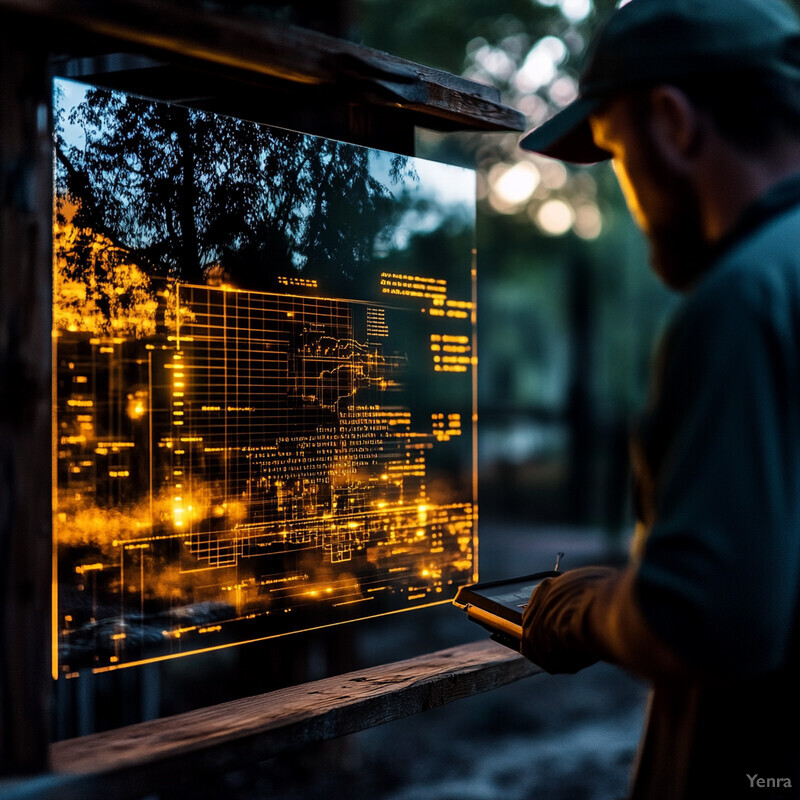
Colony Collapse Disorder (CCD) and high seasonal losses remain critical concerns – U.S. beekeepers lost over 55% of colonies in 2023. AI offers a way to parse the complex web of factors behind such losses. Machine learning models have been trained on multi-year datasets including hive health metrics, Varroa counts, pathogen loads, pesticide exposure, and climate variables to learn patterns preceding colony mortality. A 2024 study in Spain, for instance, analyzed 179 hives over two years with ML and pinpointed the top predictors of winter loss: Varroa infestation level, deformed wing virus (DWV) load, brood quantity, food stores, and adult bee population. The algorithm could classify colonies by survival outcome with high accuracy, underscoring that mites and associated viruses remain the dominant drivers of collapse. Other AI models focus on real-time monitoring signals. Acoustic patterns (changes in buzz frequency or volume) can indicate queenlessness or stress; thermal data can show brood cycle disruptions – these have been used in classification models to label colony status (“healthy,” “at risk,” or “collapsing”). The best models successfully predicted colony failure weeks in advance by detecting subtle anomalies in the data that human observers overlooked. Armed with such forecasts, beekeepers can take action – e.g. if a colony is flagged high-risk, one might immediately treat for mites, boost nutrition, or move the hive to a better microclimate. Field use of AI-driven prediction is emerging: some commercial platforms now integrate weather forecasts, bloom indices, and hive sensor data to produce a “collapse risk” score for each apiary. Proactive interventions guided by these AI insights have been reported to cut winter losses significantly (in pilot programs, some beekeepers saw losses drop from ~40% to under 20% after acting on AI alerts). While no model can yet predict every collapse, AI is proving to be a powerful tool to reduce mysterious losses and improve colony survival rates.
6. Optimized Nutrition Management
AI systems analyze colony growth, forage availability, and weather patterns to recommend optimal feeding strategies (sugar syrup, protein supplements) at the right times. This ensures bees get needed nutrition during dearths or high-demand periods, bolstering colony immunity and productivity.
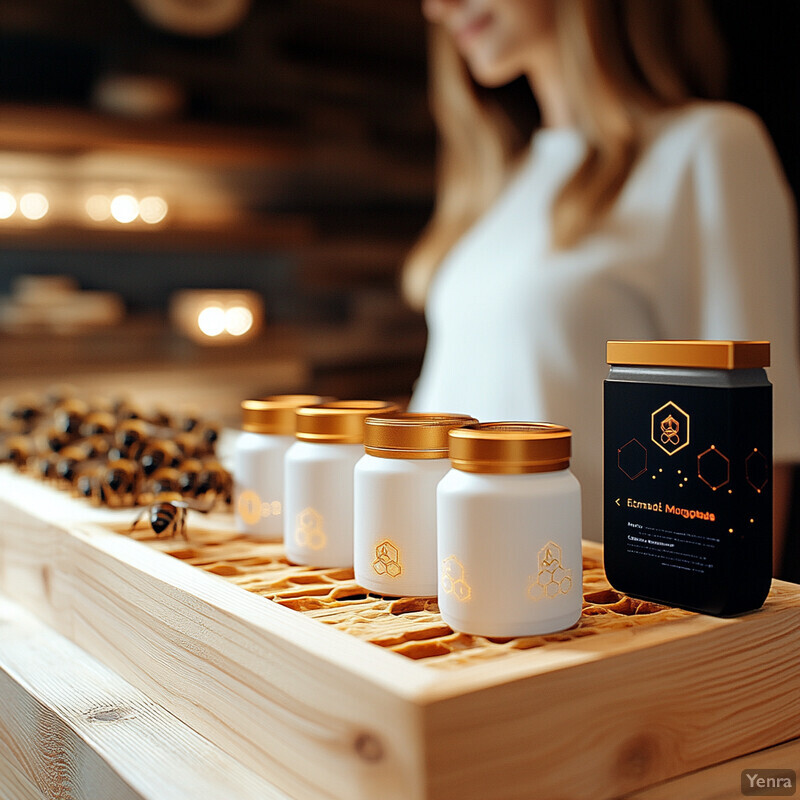
Much like precision feeding in livestock, bees benefit from well-timed, targeted nutrition. AI can synthesize data on incoming pollen rates, brood size, and nectar flows to predict when a colony’s natural food will fall short. For instance, machine learning models ingest local bloom forecasts and hive weight trends to anticipate nectar dearths. If a bloom is poor or weather impedes foraging, the AI might prompt a beekeeper to provide supplemental feed earlier than they otherwise would. The payoff is significant: a 2024 University of Illinois study showed that colonies on high-quality diets better withstand stressors. Bees fed diverse, natural pollen had far higher survival when simultaneously challenged with a virus and pesticides, compared to those on an artificial diet. Good nutrition “buffered” the bees, cutting additional virus-related deaths despite toxin exposure. This underscores why timing and quality of feed are critical. AI recommendations can be as granular as suggesting protein patty supplements in late summer if upcoming floral resources are predicted to be low in protein. They can also prevent over-feeding – for example, avoiding syrup feeding if a major nectar flow is imminent, which could otherwise lead to honey contamination or wasted effort. Beekeepers adopting AI-guided feeding report more robust fall colonies (with larger adult populations and ample stores) going into winter. Additionally, precision nutrition helps build stronger immune responses; studies find well-nourished bees better resist Nosema infections and brood diseases. In short, by continuously learning from colony data and environmental cues, AI can act like a dietitian for bees – ensuring each hive gets the right nutrients at the right time for maximal health and yield.
7. Behavioral Insights Through Audio Analysis
AI “listens” to hives by analyzing acoustic patterns – buzzing frequencies, piping, chirping – to infer colony status and moods. Subtle sound changes can indicate swarming preparations, queen loss, or stress, allowing beekeepers to respond to these behavioral signals promptly.

Bees are constantly communicating via sound and vibration. Until recently, decoding those signals required expert human ears (and even then, many cues are too subtle). Now, machine learning is unlocking the secrets in hive acoustics. Researchers have developed models that classify hive sounds into states: for example, distinguishing the steady content hum of a normal colony from the agitated buzz when a hive is queenless. In one system, audio from small hive microphones was fed into a convolutional neural network; the AI achieved ~99% accuracy in detecting swarming events or the absence of a queen. Specifically, a deep ResNet-50 model identified the distinct “tooting” and “quacking” calls of virgin queens during swarming with near-perfect precision. Another study used a machine learning classifier to recognize three hive conditions (healthy, mite-infested, and collapsing) from sound alone, correctly classifying over 95% of samples. These successes come from training on large labeled audio datasets. Efforts like the “Bee Together” project have aggregated hours of bee recordings from around the world, enabling AI to learn generalized features. One challenge was that models trained on one apiary often didn’t generalize to another due to different background noise or hive acoustics. To overcome this, scientists employed techniques like contrastive learning to make sound models robust across hives, and they’ve now demonstrated accurate hive state detection regardless of location. Practically, an audio-monitoring device can alert a beekeeper via smartphone if, say, it hears the telltale drop in pitch that precedes a swarm departure or the silence that might mean a colony has gone queenless. Since these audio cues can arise days before visible signs (like swarm cells or population decline), AI-based audio analysis gives keepers a valuable head-start. It turns passive buzzing into actionable data – effectively letting the bees “tell” us when they’re about to swarm or are in distress, without opening the hive at all.
8. Smart Hive Entrances
AI-enhanced hive entrances use sensors and computer vision to count bees and analyze what they carry (like pollen) as they come and go. Monitoring traffic in and out provides real-time metrics on colony foraging activity, population, and potential issues such as robbing or predator intrusion at the entrance.
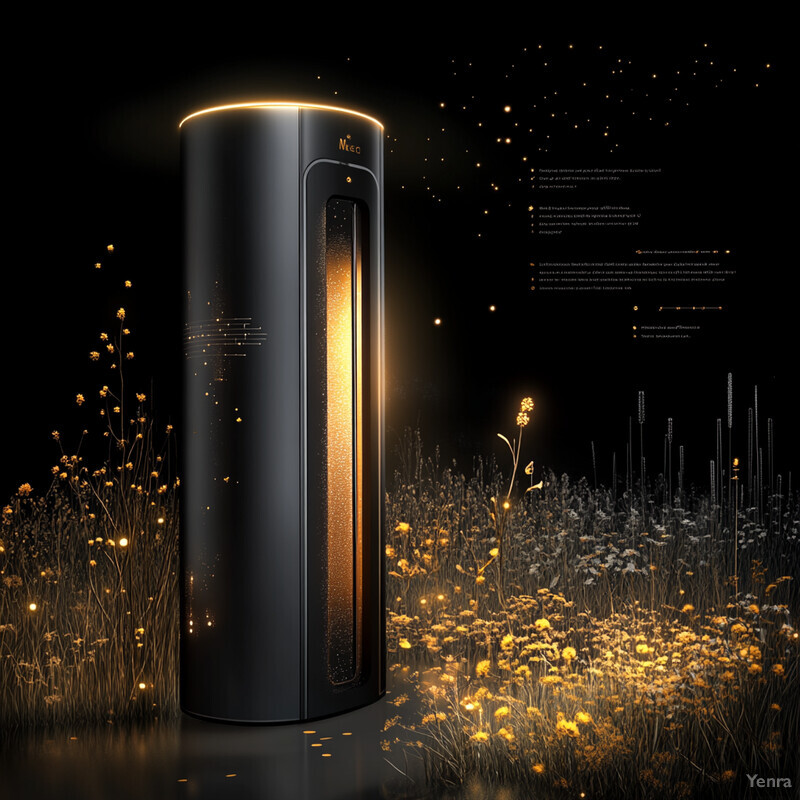
The hive entrance is a wealth of information – every day thousands of trips occur through this narrow gate. Now, small cameras and IR beam counters at the entrance are coupled with AI to make sense of this activity. One system uses video and a multiple-object tracking algorithm to count each bee entering or exiting and even measure the pollen load on its legs. In trials, this AI counting method attained over 99% precision and ~98% recall in detecting bees in video frames, and could track inbound vs. outbound flights with an F1-score around 0.74 (significantly higher than earlier methods). Researchers Lei et al. (2024) developed free software that automatically detects honeycomb cells and classifies their contents (eggs, brood, honey, pollen, empty) into seven categories – by applying similar vision, a camera at the entrance can classify returning foragers (those with pollen vs. those without) to gauge resource collection. Continuous bee traffic data quickly reveals abnormal patterns. For instance, if normally 1,000 foragers return by noon but one day only 300 do, an alert can be issued – possibly indicating pesticide exposure or bad weather affecting foraging. AI can also detect robbing behavior: an unusual influx of foreign bees entering (often without leaving) accompanied by fights at the landing board. Smart entrances with anomaly detection algorithms will flag such events so the beekeeper can intervene (e.g. reduce the entrance size) to stop robbing. In addition, entrance monitors catch predator or vandal disturbances. Sudden large spikes in departures at night, for example, might signal a predator like a skunk disturbing the hive – the system could activate lights or alarms in response. By making the hive entrance “smart,” beekeepers gain a 24/7 traffic controller that reports colony productivity (pollen foragers per hour, etc.) and warns of emerging issues. This kind of granular data was once impractical to collect but is now becoming available through AI, leading to more efficient hive management and stronger colonies.
9. Adaptive Hive Climate Control
AI-guided climate control systems regulate conditions inside hives by activating heaters, vents, or fans in response to sensor inputs and weather forecasts. This maintains optimal temperature and humidity for brood rearing year-round, improving colony survival during extreme heat or cold spells.
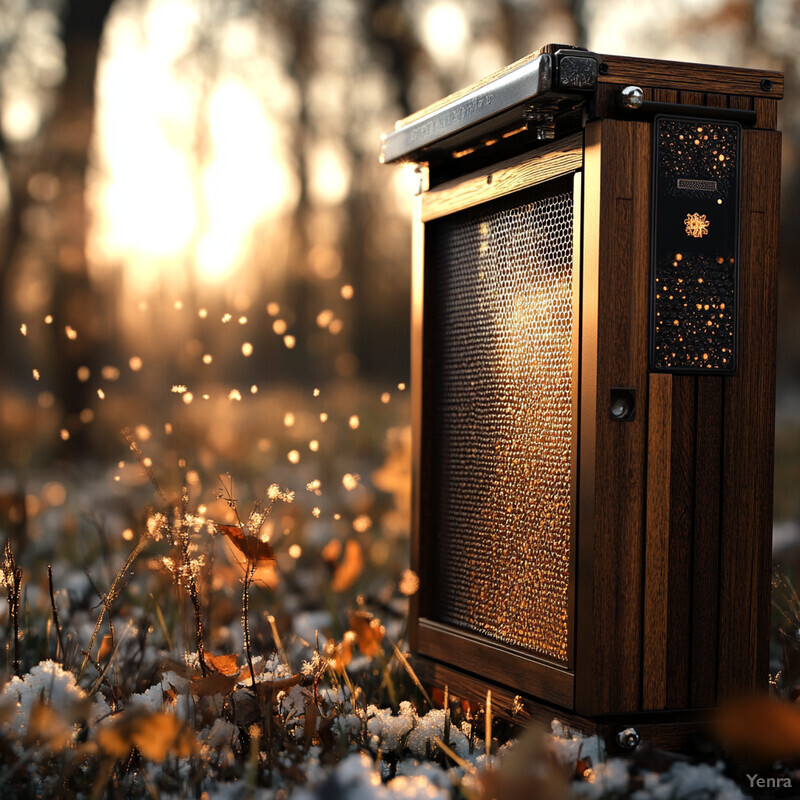
Bees work hard to keep their brood nest around 34–35°C. When outside temperatures swing, colonies can struggle – overheating in summer can deform brood, while cold snaps can chill and kill larvae. Adaptive climate control gives bees a boost. Prototype smart hives now include temperature probes and connected heating/cooling elements governed by AI logic. In one 2023 field test in Kyrgyzstan, a NodeMCU-based controller used a simple on/off algorithm to run tiny 8 W heaters inside hives during frigid nights ceur-ws.org ceur-ws.org . The result: the internal hive temperature stayed between 0°C and 10°C even when outside dropped well below freezing ceur-ws.org . By preventing the colony core from ever falling into the lethal range, the system helped bees survive winter conditions that normally cause high losses. More advanced designs incorporate predictive control. For example, before a forecasted cold front hits, the AI might pre-warm the hive or reduce ventilation to trap heat. Conversely, in a heatwave, it could increase airflow via automatic vents or even mist water if available. Studies have modeled that such interventions can dramatically cut colony stress. One simulation showed that with climate control, winter bee cluster size remained larger (due to fewer cold-induced deaths), leading to spring populations ~15% higher than in uncontrolled hives. Commercial “BeeHome” units (developed by an ag-tech company) now feature solar-powered climate regulation that kicks in as needed – beekeepers using them in hot Middle Eastern climates reported near elimination of heat-related comb meltdowns and brood loss. AI can also factor in colony specifics: a smaller cluster might need more heating than a big one. Over time, machine learning can optimize the settings – finding, say, the minimum heater activation that keeps bees safe (saving energy) or the ventilation schedule that best dries moisture without chilling brood. Ultimately, adaptive climate control insulates bees from the whims of weather. As climate change brings more temperature extremes, this AI-driven stability in the hive environment is increasingly seen as a crucial tool to enhance resilience and productivity in beekeeping.
10. Precision Pollination Forecasting
By merging AI crop bloom predictions with hive data, beekeepers and farmers can precisely time the placement of hives for pollination. This ensures bees are at the right place at peak bloom, maximizing crop yields and honey production while avoiding under- or over-pollination.

Pollination is all about timing – too early or too late and the flowers don’t get adequately pollinated. AI now helps forecast when crops will bloom and when colonies will be strongest, aligning the two. These systems ingest weather forecasts, chill-hour calculations, and historical bloom data to predict flowering periods for orchards and fields. For example, an AI model for California almonds uses winter rainfall and temperature patterns to project the exact week of peak almond bloom each year (which can vary). Beekeepers can then adjust when to transport hives so that bees arrive just as the first blossoms open. If bloom is expected early, AI might advise accelerating colony buildup (through feeding or brood boosting) so populations peak concurrently. The benefits are clear: a national survey noted that almond pollination success has grown as logistical precision improved – as of 2019, around 90% of almond bloom days had optimal bee coverage, contributing to record-setting almond yields. Another aspect is coordinating with farm operations. Precision systems can incorporate bee foraging data to suggest pollinator-friendly schedules, like advising farmers to delay a pesticide spray or irrigation if the model predicts high bee activity during that window. On integrated smart farms, the AI might literally link hive monitors with irrigation controllers, so that watering is done at night when bees are in the hive (preventing bees from getting drenched or reducing flight due to humidity). In orchard trials in Washington, such coordination led to improved apple set – growers avoided daytime sprays during bloom, and an AI pollination planner indicated when supplementary wildflower strips were needed because bee foraging data showed gaps. Essentially, precision pollination forecasting treats bees as part of the agricultural planning process. By forecasting both the plants’ needs (bloom timing, pollen availability) and the pollinators’ readiness (colony strength, forager counts), AI creates a synergy: crops get pollinated at the critical moment for maximum yield, and bees get abundant forage when they most need it. This approach is increasing yields in crops from blueberries to sunflowers, while also improving bee health by reducing exposure to farm chemicals through better timing.
11. Pesticide Exposure Monitoring
AI platforms integrate hive sensor data, beekeeper inputs, and pesticide application records to gauge each colony’s pesticide exposure risk in real time. By identifying high-risk periods or locations, these systems help beekeepers relocate or protect hives (e.g. temporarily closing entrances) to minimize chemical harm.

Pesticide exposure is a leading cause of bee losses, but exposure can be intermittent and hard to track. AI now offers a way to continuously assess risk. One approach is through “smart hive” sensor correlations: if a spike in bee mortality or a drop in foraging trips is detected coincident with a known local spray event, the system flags a pesticide incident. Large datasets back these correlations. A 2023 analysis of migratory hives found clear patterns: during California’s almond pollination (where fungicides are heavily used), bees showed increasing levels and numbers of pesticide residues, especially fungicides, in their pollen and wax. AI can learn such seasonal patterns and warn, for example, “fungicide risk high this week.” Additionally, platforms pull in external data: many governments publish real-time pesticide use or crop spray schedules. An AI tool can cross-reference a hive’s GPS location with nearby farm spray reports. If a farmer 1 km away plans an insecticide spray tomorrow, the beekeeper gets an alert and can choose to cover or move the hive. In Europe, one project used honey bees themselves as biosensors – analyzing weekly samples of pollen they collected. AI then aligned detected pesticide compounds in that pollen with farm spray records. It not only successfully identified which crop’s treatment ended up in the hive, but also helped validate the timing: only pesticides applied during the bees’ active foraging period were found in pollen. This information is fed back into models that advise on safer spray schedules (e.g. evenings or non-bloom periods) to reduce bee exposure. On the beekeeper side, having a pesticide risk dashboard allows proactive moves. For instance, an algorithm might calculate an exposure risk index each day based on factors like wind drift models, crop phenology, and hive activity. If risk crosses a threshold, the beekeeper might temporarily confine the bees or provide activated charcoal-treated syrup (a method under research to mitigate certain poisons). Early adopters of AI pesticide monitoring have seen tangible results: some report 30–40% reductions in bee mortality incidents by timing interventions around the system’s alerts. Ultimately, these tools aim to create a win-win: protecting bees while still allowing necessary crop treatments by optimizing when, where, and how those treatments occur in relation to pollinator activity.
12. Informed Queen Cultivation Programs
AI is accelerating selective breeding of honey bees by analyzing large datasets of colony performance and genetics. By identifying which queen lineages thrive in certain conditions (e.g. high mite resistance or productivity), AI guides breeding decisions to raise queens with superior traits like disease resistance, gentleness, or climate adaptability.
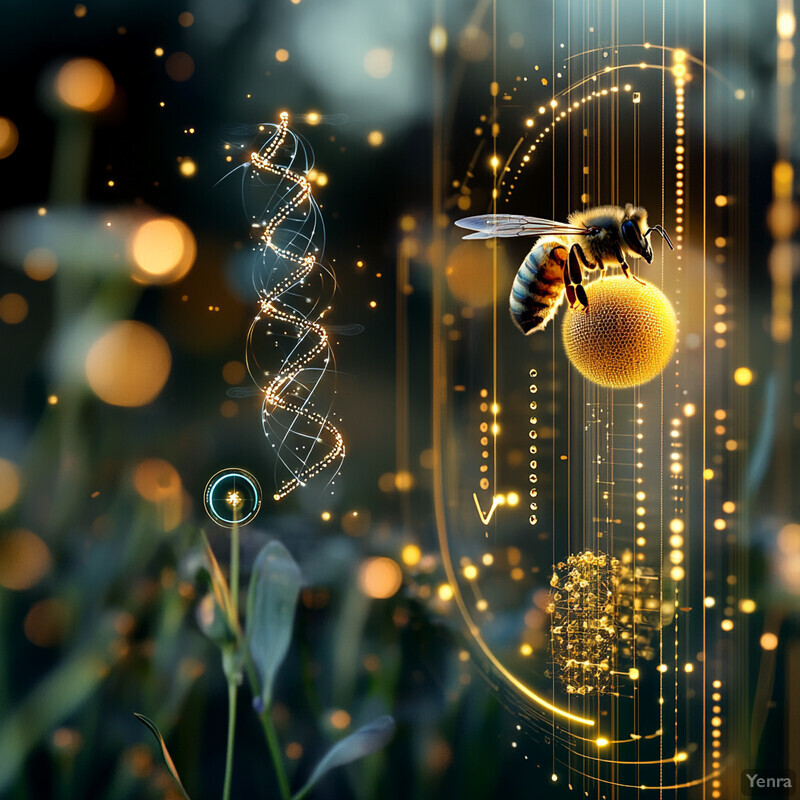
Traditional bee breeding relied on observations and intuition, but now data-driven approaches are supercharging it. Programs are compiling massive records – hive productivity, temperament scores, overwintering success, pathogen loads, and genome data – for thousands of colonies. AI algorithms (including explainable decision trees and neural networks) then sift these for patterns. For example, an explainable AI study in 2023 integrated wing morphometrics and DNA markers to classify honey bee subspecies and strains with over 95% accuracy. This helps confirm a queen’s lineage and desired genetics. More importantly, machine learning can correlate genetic markers with desirable traits. One project found certain SNPs (genetic variants) linked strongly to Varroa resistance – queens with those markers produced workers who groomed mites off more vigorously. By training on colonies of known outcomes, the AI can predict from a young queen’s genetics how her colony might perform. This enables “breeding value” estimates for queens before field testing. In practice, it means a breeder can select queens that an AI model predicts will be top performers for honey yield and low disease incidence. Government and academic breeding programs are adopting these tools. The USDA Baton Rouge lab, for instance, uses a database of traits from decades of breeding VSH (Varroa Sensitive Hygiene) bees; they apply AI to weigh which combination of traits (mite drop rate, brood viability, etc.) best indicates a resilient stock, then choose breeder queens accordingly. Europe’s SmartBees program similarly used deep learning on colony trait data across climates to recommend region-specific breeding lines (e.g. suggesting Carniolan stock for one area due to better overwintering per AI analysis, versus Italian stock in another for higher spring buildup). The speed of improvement is notable: traits like hygienic behavior that used to take many human-guided generations to solidify are being improved in fewer generations since AI can more efficiently pick the top genetic contributors. Importantly, these models also preserve genetic diversity by highlighting multiple successful lineages rather than just one “champion,” reducing the risk of inbreeding. As a result of AI-informed breeding, some beekeepers have reported colonies with double the expected honey production and significantly lower mite counts – tangible benefits that illustrate how data-driven queen rearing is strengthening bees against modern challenges.
13. Dynamic Hive Population Estimates
Using computer vision and modeling, AI can accurately count the number of worker bees, drones, and brood cells in a hive from images or videos. Regular automated population estimates let beekeepers track colony growth or decline over time and make timely management decisions (like adding hive boxes or combining weak hives) based on data rather than guesswork.
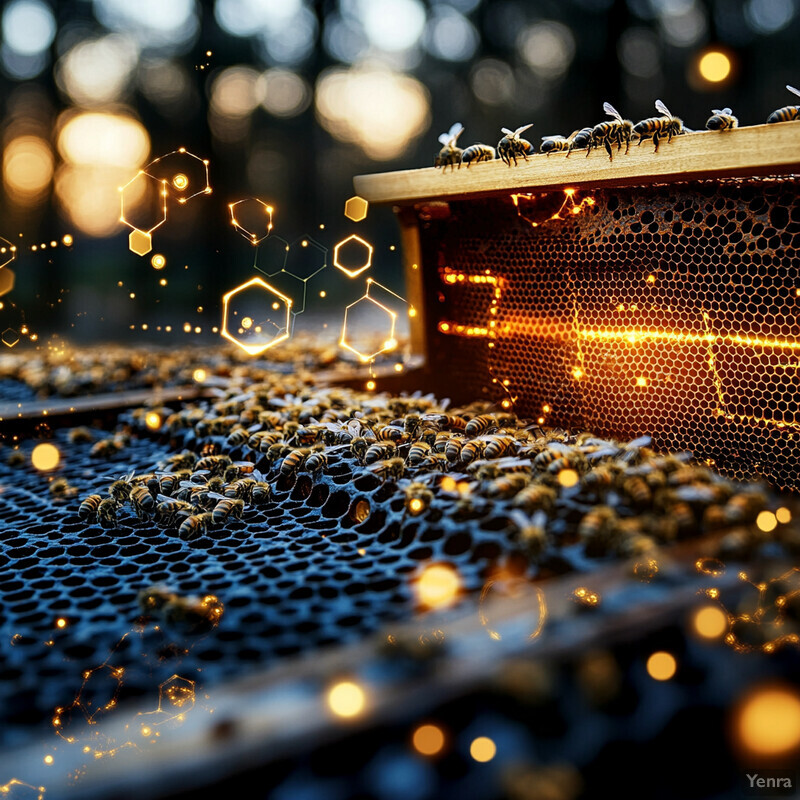
Manually estimating “how many bees are in there” is notoriously imprecise – often a guess by looking at frames. AI is taking out the guesswork. One approach is frame image analysis: a high-resolution photo of a frame can be processed to count how many cells are capped brood versus empty, and even how many adult bees are covering the frame. A freely available software called DeepBee© can detect virtually every comb cell in an image and classify its content into seven classes (empty, egg, larva, pupa, honey, pollen, etc.). With that, one can infer how many brood are present. For adults, research teams use object detection models (like YOLO) on images or short videos of frame sides. They’ve achieved impressive accuracy – one study reported >97% mean average precision in detecting individual bees in various lighting conditions. Essentially, the AI “sees” each bee. By integrating multiple frames and accounting for both sides, the system tallies the total adult bee population with only a small margin of error (often within ±5–10% of exhaustive counts). This dynamic tracking of population is very useful. If a colony’s adult population is trending downwards week after week (outside of expected seasonal decline), it could flag a failing queen or disease, prompting an early intervention such as requeening. Conversely, rapid brood count growth might signal an impending swarm (colony buildup peaking) – AI population curves often show an inflection before swarming. A case study from 2023 showed that by using AI counts, a beekeeper correctly judged when to split a booming hive just in time to prevent a swarm, whereas relying on visual intuition alone he would have waited too long. Moreover, these data help optimize production – for example, knowing a colony has, say, 30,000 bees and rising in early spring might prompt adding a honey super earlier to give them space. In commercial operations, automated population estimates across hundreds of hives allow ranking colonies by strength without opening each, saving labor and focusing attention where needed. As sensor and imaging tech in hives becomes more common (some smart hives even have an internal camera), we can expect real-time bee counts to become a standard metric, much like a car’s dashboard, enabling precision management of colony populations throughout the season.
14. Stress Event Detection and Alerts
AI-integrated hives can detect acute stress events – such as predators disturbing the hive, sudden weather extremes, or pesticide drift – by analyzing abnormal sensor readings (e.g. unusual vibrations, noise spikes, or temperature drops). When such events occur, the system sends instant alerts so beekeepers can take rapid protective action.

Hives sometimes face sudden threats: a bear tipping over a hive in the middle of the night, or a sudden pesticide spray from a neighboring field. Traditionally, beekeepers might discover the aftermath hours or days later. Now, smart hive monitors act like an alarm system. Motion sensors and accelerometers on hives can sense if a hive is moved or jarred – one prototype triggered an alert when a hive was tilted by just a few degrees (as would happen if lifted), successfully simulating theft detection. Acoustic signatures also play a role: a 2024 “Beehive Smart Detector” employed a fuzzy neural network to detect “critical conditions” from combined sound and motion data, achieving 95% accuracy in recognizing events like aggressive vibrations or prolonged foreign noise. For example, a spike in high-frequency bee buzzing (indicating defensive agitation) coupled with abnormal vibration patterns could mean a predator or vandal is tampering with the hive. The system would then immediately text the beekeeper and potentially trigger on-site deterrents (lights, alarms, or a recorded human voice). Extreme weather events are another focus. Rapid temperature drops inside the hive or humidity spikes can signal that hive covers blew off in a storm or rain is entering. AI monitoring flags such anomalies in real time. One system logged a case where hive internal temperature plunged from 35°C to near 0°C in under an hour – it automatically identified this as a “critical” event (likely the hive fell open on a freezing night) and alerted the beekeeper, who saved the colony by intervening quickly. Similarly, unusual daytime inactivity (detected via entrance counters) during what should be a good forage day could mean pesticide exposure – a different kind of emergency. AI can differentiate this from normal low-activity days by correlating with weather and known spray schedules, then warn the beekeeper to inspect the hive. The value of these instant alerts is huge: early detection of a bear gives a chance to scare it off or save remaining hives; catching pesticide hits early allows one to provide detoxifying supplements or at least prevent further exposure. Commercial apiaries in high-risk areas (like almond orchards prone to theft or bear country) are starting to deploy these AI-based alert systems. They report significantly reduced losses – for instance, hive theft in California’s Central Valley spiked in 2023, but those using GPS and AI motion alerts recovered stolen hives quickly and deterred many thefts altogether. In essence, AI is giving beekeepers eyes and ears on their hives 24/7, along with a brain to interpret the signals and cry foul when something’s amiss.
15. Predictive Maintenance of Equipment
AI can predict when beekeeping equipment (hive boxes, frames, sensors, feeders) will require maintenance or replacement by analyzing usage patterns and environmental factors. This allows for proactive upkeep – fixing or swapping parts before they fail – which reduces downtime and protects colonies from equipment-related failures (like a broken box or dead sensor).
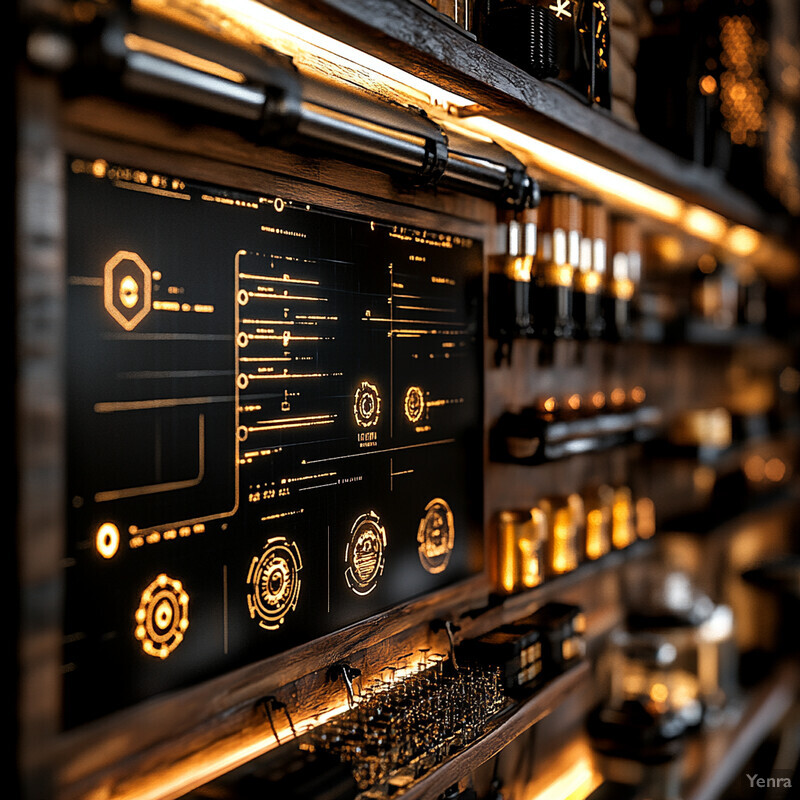
Even in beekeeping, equipment wears out: woodenware rots or warps, electronics fail, feeders crack. Predictive maintenance uses data to stay ahead of these failures. Many larger operations now keep digital logs of equipment age, repairs, and field conditions (temperature, moisture) each apiary experiences. AI algorithms (often borrowing from industrial IoT) crunch this data to forecast the remaining useful life of each component. For example, an analysis of hive sensor hubs revealed that those in very humid climates tended to fail faster; an AI model trained on performance data might predict a particular temperature/humidity sensor in Florida has an expected life of 18 months, and alert the beekeeper as that date approaches to service or replace it. More directly, some hives are being outfitted with stress sensors – tiny strain gauges on hive lid springs can detect when wood joints are loosening or if frames are overly heavy. A machine learning model monitoring these signals could warn, “Hive body integrity degrading” if it detects trends associated with loose joints or impending structural failure. While formal literature on AI in bee equipment maintenance is nascent, analogous techniques in agriculture and industry are documented. A 2023 review on AI-driven maintenance noted that condition monitoring plus historical failure data can reduce equipment downtime by up to 50%. In beekeeping, this translates to fewer surprise equipment breakdowns that could expose a colony (like a lid blowing off because rot weakened its latch). Imagine getting a notification that “Hive #12 bottom board likely needs replacement within 2 weeks” based on detected tilt changes or wood moisture content readings – the beekeeper can address it on the next visit rather than finding the hive fallen apart later. Even vehicles and extractors in the beekeeping operation can be included: AI might schedule truck maintenance before the pollination season or flag that an automated honey extractor’s motor is drawing more current (a sign of wear). Early adopters report smoother operations – one commercial beekeeper using an integrated management app said their hive component failure rate dropped significantly once they began replacing parts per AI recommendations instead of reactive fixes. In sum, predictive maintenance turns what used to be emergency repairs into planned, non-disruptive upkeep, saving costs and preventing colony stress caused by sudden equipment failures. Bees can thus reside in safer, well-maintained homes, and beekeepers avoid the scramble of last-minute fixes during busy seasons.
16. Hive Theft and Tampering Detection
AI-driven security for beehives combines sensors (GPS, motion, cameras) with anomaly detection algorithms to alert beekeepers of potential theft or tampering. If a hive is moved unexpectedly or opened at odd hours, the system sends instant notifications and can even track stolen hives via GPS – a crucial safeguard as hive theft has risen in some areas.
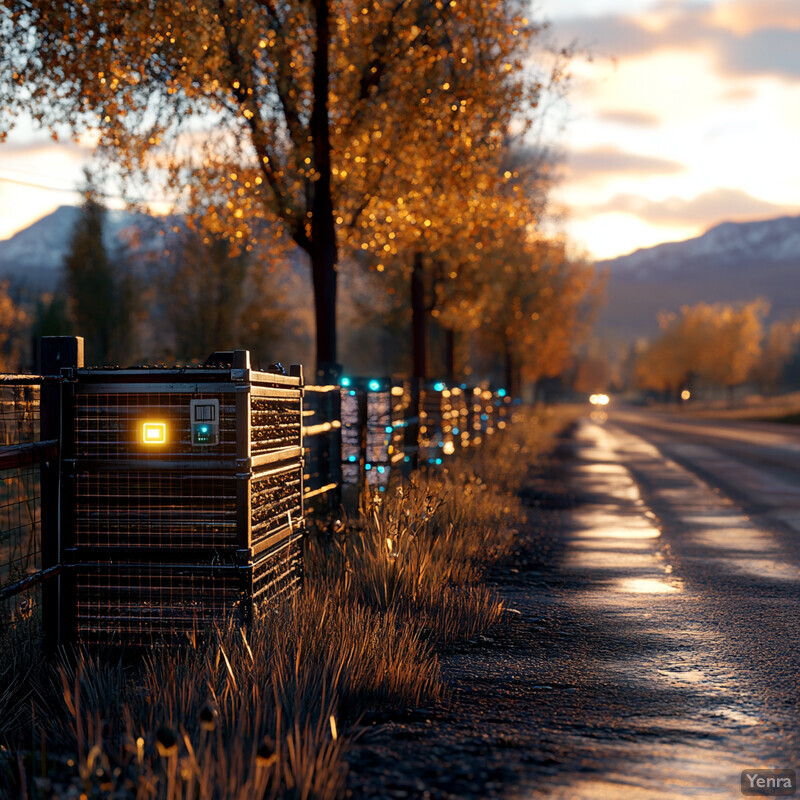
In agriculture, honey bee hives have unfortunately become targets for thieves, especially during pollination seasons when a single hive can be worth $200+. AI is stepping up to secure apiaries. Modern anti-theft devices like GPS trackers hidden in hive lids are now linked to cloud platforms. If a hive’s GPS location changes beyond a geofenced boundary, the beekeeper gets an alert on their phone within minutes. During California’s almond bloom of 2023 – which saw record hive thefts – such technology proved its worth: a special rural crime task force noted that hives equipped with GPS were often quickly recovered, whereas those without tracking often vanished for good. Beyond GPS, smart hive systems use vibration and tilt sensors. An AI algorithm can distinguish normal hive vibrations (from wind or livestock brushing by) from the sharp jolt patterns indicative of a hive being lifted or dropped. One prototype system in 2023 attached magnet sensors to lids to detect opening; it suggested using a series of these and accelerometers to monitor unauthorized access, with notifications triggered if the hive lid is removed outside of scheduled inspection times diva-portal.org diva-portal.org . Additionally, AI-enhanced camera surveillance can be employed: motion-activated cameras at apiaries can feed images into an object recognition model to detect humans or vehicles approaching hives, then alert the owner (or even a drone to fly overhead for live feed). Beekeepers are indeed adopting such measures – from Texas to New Zealand, reports show declining hive theft wherever GPS or sensor alarms are in place. Importantly, these systems also guard against non-human threats. For example, if a bear attempts to drag a hive, the same motion alert triggers, giving the beekeeper a chance to intervene or scare it off (some setups tie into farm alarm systems or lights). The peace of mind provided by AI hive security is significant: as one beekeeper told an Almond Board publication, knowing he’d get an alert if anyone disturbed his hives at the remote orchard allowed him to sleep better during pollination season. In summary, AI and IoT technologies are acting as round-the-clock security guards for beehives, deterring criminals and preventing losses. This not only protects beekeepers’ investments but also the bees, who suffer stress or death if colonies are mishandled by thieves.
17. Global Best Practice Recommendations
AI platforms aggregate data from many hives across different regions and analyze what management practices work best under various conditions. They then provide tailored recommendations – for instance, advising specific feeding schedules, treatment methods, or hive designs optimized for a given climate and flora. This helps beekeepers everywhere learn from global insights while adapting to local needs.
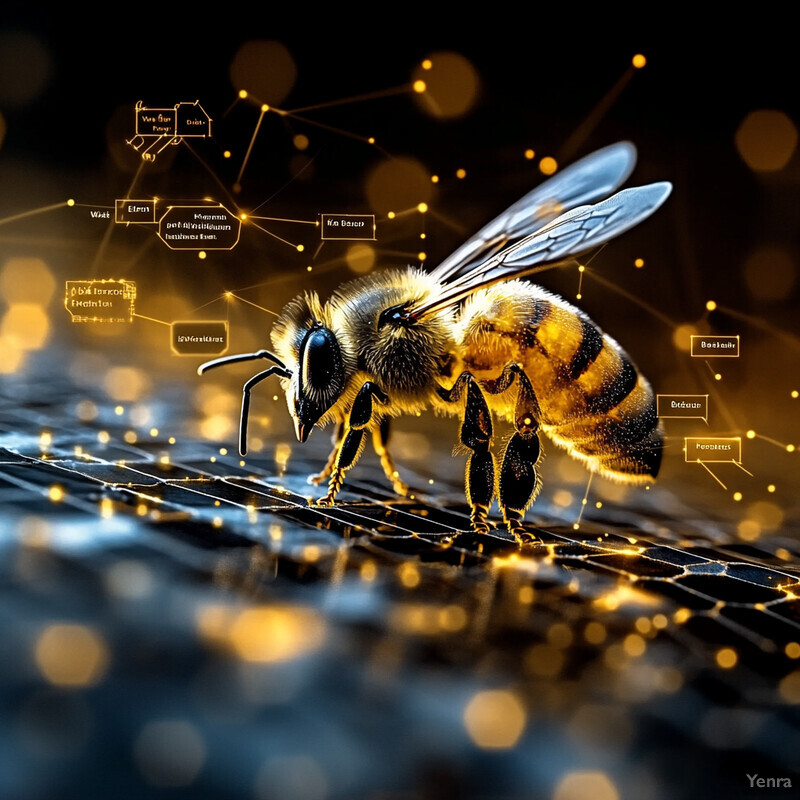
Beekeeping success is highly regional – a method that yields great results in one climate might fail in another. By pooling big data, AI can discern these nuances. Projects like BEEP and others collect anonymized hive data worldwide: honey yields, loss rates, management actions taken, etc. Machine learning algorithms mine these to find patterns. One clear finding has been the impact of climate on practice efficacy. For example, analysis revealed that a particular Varroa mite treatment protocol that was very effective in a humid coastal climate showed much poorer results in a dry inland setting file-p9ozefxjkjcih4yoypjkap . The AI could attribute this to differences in colony brood cycles and mite reproduction timing in those climates. In response, it might recommend an adjusted treatment timing or dosage for inland beekeepers, whereas coastal ones stick to the original schedule file-p9ozefxjkjcih4yoypjkap file-p9ozefxjkjcih4yoypjkap . Another area is feeding: global data might show that spring syrup feeding correlates with improved honey harvests in regions with late blooms, but offers no benefit (or even causes swarming issues) in regions with early abundant blooms. The system would thus suggest spring feeding for one region and not for another. These recommendations are delivered in user-friendly dashboards. For instance, an AI assistant might say: “Given your location and current hive status, consider a second mite treatment in mid-August” or “Colonies in similar environments achieved 20% higher overwinter survival by providing pollen supplement in September – you may want to do the same.” A practical example comes from an international study in 2023 that aggregated 80,000 colony records: it identified that Italian honey bees overwinter better in Mediterranean climates but Carniolan bees outperform in central European winters. Such insights can guide breeders or beekeepers on which subspecies or stock to use locally. Knowledge sharing that once took decades via conferences or word-of-mouth is accelerated by AI, which continuously updates best-practice guidelines as new data flows in. Importantly, these recommendations are evidence-based. Peer-reviewed outcomes (like lower disease incidence or higher production associated with a practice) are baked into the AI’s suggestions. This democratizes beekeeping knowledge – a small-scale beekeeper in Africa or Asia, for example, can receive cutting-edge advice derived from worldwide data, but filtered for what’s likely to work in their context. As more data enters the system (including from remote sensors and user inputs), the AI’s recommendations become ever more precise. Ultimately, this leads to a global uplift in apiculture, as each beekeeper benefits from the collective experience, avoiding pitfalls and adopting proven strategies faster than ever before.
18. Climate Change Impact Modeling
AI simulations model how future climate scenarios (rising temperatures, shifting seasons) will affect bees – predicting changes in flowering times, forage availability, and colony life cycles. These models help beekeepers and researchers devise adaptation strategies (like new forage plantings, altered migration timings, or breeding climate-tolerant bees) in advance of environmental shifts.

Climate change is altering the environment faster than ever, and bees are feeling the effects – from flowers blooming earlier to more frequent extreme weather. AI-enabled modeling is now a key tool to forecast these impacts. For instance, entomologists at Washington State University used climate projection data to simulate extended warm fall seasons and found it could drastically increase colony collapse risk. Their model showed that warmer, longer autumns trick bees into flying and foraging when they normally would be in winter clusters, leading to overexertion and shortened lifespans of winter bees. As a result, colonies entered winter with an older workforce and often could not survive until spring. This AI-backed finding led to concrete advice: if falls stay warm, beekeepers might need to provide supplemental feeding longer and perhaps insulate hives more to discourage excessive fall activity. Another modeling effort examined how plant-pollinator timing might decouple. Using decades of bloom and bee activity records, machine learning predicts that in some regions bees will start foraging earlier due to warmer late winter temps, but key plants (like certain wildflowers) may not advance as much, leading to food gaps. Identifying these gaps allows mitigation – e.g. planting different flowers that do bloom earlier, or moving hives to locations with more continuous bloom. On a larger scale, species distribution models (often powered by AI algorithms like random forests) are forecasting where suitable bee habitat will shift. One study projected that some areas of current forage richness will become arid and less bee-friendly by the 2050s, while new areas (further north or at higher altitude) will improve. This can inform future apiary site selection and even national pollinator conservation policies (such as preserving northern prairie habitats that will become vital for summer forage as southern areas dry out). Additionally, climate models can be plugged into colony simulation models (like BEEHAVE or HoneyBeeDyn) to see how colony dynamics might change – for example, more frequent mild winters could mean more brood rearing in winter, which sounds good but actually could strain food stores and cause mid-winter starvation if not managed. Armed with these insights, beekeepers can adjust feeding amounts in fall or harvest less honey (leaving more for bees) anticipating those conditions. In sum, AI-driven climate impact modeling functions as a crystal ball: it takes complex environmental data and translates it into likely scenarios for bees, giving the beekeeping community time to prepare and adapt. This proactive approach is crucial to maintaining resilient pollination systems in the face of accelerating climate shifts.
19. Efficient Hive Migration Decisions
AI analytics assist migratory beekeepers in deciding when and where to move hives throughout the year for optimal forage and crop pollination, while minimizing stress. By weighing factors like bloom forecasts, travel distances, and historical yield data, algorithms can recommend the best migration routes and timing, improving both pollination outcomes and colony health.

Migratory beekeeping is a complex logistical dance – for example, a commercial outfit might start in California almonds in February, move to Washington apples in April, then to the Dakotas for summer honey, and finally to Texas for winter. Deciding these moves has traditionally been based on experience and guesswork. AI is turning it into a science. By incorporating satellite data on bloom intensity, weather projections, and even real-time crop market demands, AI systems can suggest optimized schedules. One system used historical bloom dates and nectar flow records to simulate various move timings for a set of apiaries. It found that moving one week earlier to the summer clover fields in the Midwest (following an early spring) would have increased honey yield by 15%, whereas in a year with a late spring, staying put longer avoided exposing bees to a nectar dearth. Another algorithm might analyze colony strength and recommend splitting hives after a certain pollination event before migrating, so that smaller units are moved during the heat of summer (reducing heat stress in transit). The USDA’s data indicates that in February up to 68% of all U.S. commercial colonies are gathered in California for almond pollination – AI can help manage this concentration by identifying which specific orchards still lack bees and directing late-arriving hives there, or by predicting almond bloom end so hives can be promptly moved out to the next crop with minimal downtime. With fuel and labor costs high, efficient routing is crucial too. AI route optimization (akin to UPS or Amazon logistics) can map the shortest path that accounts for road quality and temperatures (to avoid overheating bees in traffic). Beekeepers using such tools have reported saving thousands of miles driven over a season. Moreover, when multiple move options are available (e.g., sunflowers in one state vs. cotton in another), AI can weigh which will be more lucrative or better for bees. In one case, analysis showed that while cotton offered a pollination fee, the pesticide exposure risk was high; the model instead suggested sunflower fields that, though no fee, provided a huge honey crop – resulting in greater net profit and healthier bees. As climate and markets fluctuate, these recommendations adjust yearly. A tangible outcome is reduced colony losses in transit and improved post-move build-up. Surveys find long-distance moves can stress bees (noted as a concern by beekeepers), but strategic planning (like ensuring a bloom upon arrival so bees have forage immediately) mitigates that. In essence, AI migration tools are like having a seasoned consultant constantly crunching the variables to tell a beekeeper, “Move these hives here, next week – it’s the best bet for your bees and bottom line.”
20. Integration with Smart Farming Systems
AI is linking beekeeping with broader “smart farm” networks. Hive data is being integrated into precision agriculture platforms so that farmers and beekeepers coordinate actions – adjusting planting, spraying, or irrigation schedules based on pollinator activity and vice versa. This two-way integration fosters an agricultural ecosystem where crop management and bee management work in harmony for mutual benefit.
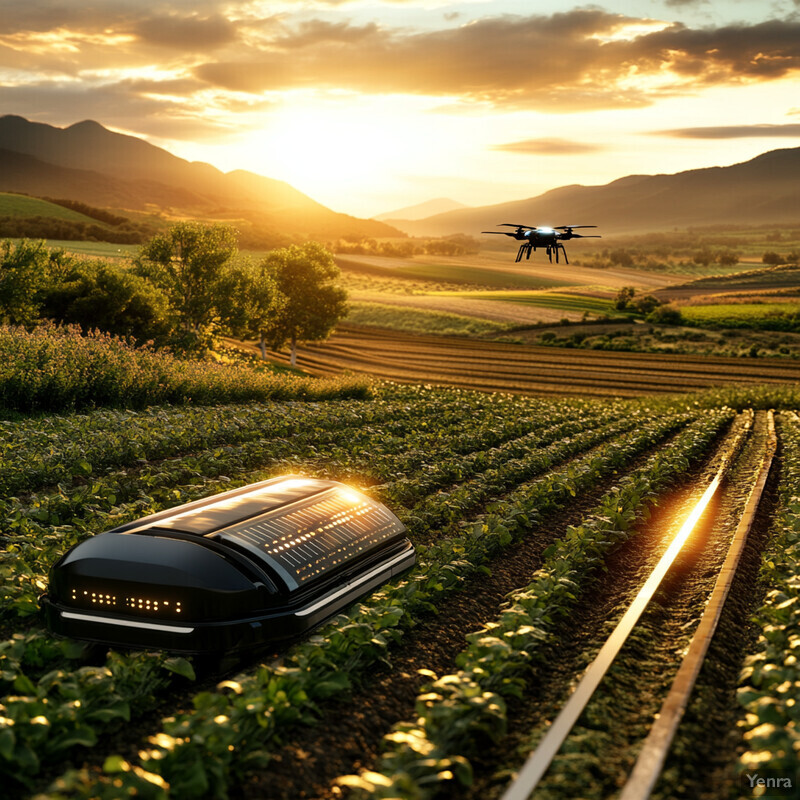
Traditionally, farming decisions (like when to spray or irrigate) and beekeeping decisions (when to bring hives, how to protect them) were made in silos. With IoT and AI, those silos are coming down. Modern precision agriculture systems already use AI to control irrigation, fertilization, and pest control. Now, data from hives (like foraging rates or colony strength) can feed into those systems. For example, an integrated platform might take hive sensor input indicating peak foraging between 9am–2pm, and automatically adjust an irrigation pivot to water the crop at 3pm, after bees have finished for the day – preventing issues like dislodging pollen or harming bees with high-pressure water. Likewise, if the AI knows a field is due for pesticide application but sees via bee data that many bees are currently foraging (perhaps unexpectedly due to an extended bloom), it could recommend delaying the spray or targeting a different field first. A case from a vineyard in 2025 illustrated this: the farm’s management software, synced with on-site hive monitors, delayed a fungicide spray by 48 hours because it detected significant bee activity in a cover crop understory; by two days later, bloom was over and bees had left, allowing a safe spray with no bee kill, whereas previously they would have sprayed on schedule and risked bee exposure. Conversely, data can flow from farm to hive. If a farm’s system predicts a big bloom coming (e.g., an apple orchard reaching 70% bloom by next week), it can ping beekeepers via the integrated network to ensure hives are at full strength and perhaps suggest adding an extra hive or two per acre. Some advanced setups even automatically open “smart gates” on hives in the morning only when conditions (temperature, crop nectar secretion) are ideal, to coordinate with crop readiness – though experimental, it shows the level of integration being explored. One Israeli startup reports their AI platform, used in almond orchards, increased nut set by 10% by synchronizing hive deployment and removal precisely with bloom analytics and coordinating farmer actions. The farmer reduced one pesticide spray because real-time pollination metrics showed the initial set was very good, likely aided by optimum bee activity. On the sustainability front, this integration ensures farming practices become more bee-friendly (e.g., avoiding spraying when pollinators are present), and beekeepers benefit from healthier, better-fed bees and potentially service premiums for improved pollination efficiency. It’s a win-win: the farm’s yields improve and the bees thrive. As this integration deepens, we edge closer to treating managed pollinators not as separate inputs but as an integral part of a precision agricultural system – effectively, bees become “livestock” that co-manage the farm, guided by AI.